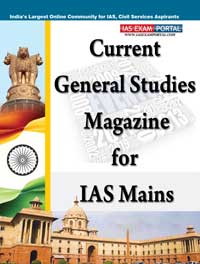(HOT) UPSC Current Affairs 2025 PDF
NEW! The Gist (NOV-2025) | E-BOOKS
Current General Studies Magazine: "The Incentive to Dope" July 2016

Current General Studies Magazine (July 2016)
General Studies - II "Debate Based Article" (The Incentive to Dope)
The Olympics and politics are normal bedfellows. If the 1980 Moscow games and the 1984 Los Angeles games were marred by Cold War-inspired boycotts, the 1936 Berlin games showcased Nazi ideology and the 1972 Munich games was brutally hijacked by terrorists. But the Rio Olympics is unusual in that it has been sucked into a doping scandal that has touched several nations, most notably Russia, even before the games have begun. Several Indian athletes too have failed dope tests, including wrestler Narsingh Yadav (though he has been partially exonerated after investigations), highlighting once again the pervasive influence of drugs on the sporting world. It also showcases how much nationalism is intertwined with Olympic excellence. Though it is completely contrary to Pierre de Coubertin’s idea of Olympism — the games were meant to foster peace and not competition between nations — the nationalism-Olympics connection has been the reality for most of the 20th century.
The sordid link between performance enhancing drugs and national glory goes back a long way. It was not uncommon for athletes to use stimulants during the ancient Olympic games in Greece. In the modern era, it was most effectively used by the former Soviet Union and some of the nations of the former Eastern Bloc. In the 1976 Montreal games when an East German coach was asked about rumoured steroid use and the deep voices of his female athletes, he apparently answered, “We have come here to swim, not to sing”. Usually it was not athletes who were after individual glory, but a system tailored to achieve sporting glory in the Olympics. The system was an elaborate one with coaches, scientists and laboratories working in tandem to boost the performance of athletes, especially through the use of steroids.
This system was critically predicated on an ideology where sporting excellence was integral to nation building and nationalism. No wonder, Lenin had once declared, “The physical education of the rising generation is one of the necessary elements of the communist education of youth.”
It’s not that drugs have always been associated with political systems aimed at sporting excellence. China’s sports prowess was tied to national glory beginning in the 20th century and could plausibly be traced back to 1907 when the Chinese YMCA began a campaign linking physical education to national strength. In a 1917 article, ‘A Study of Physical Culture,’ Mao Zedong wrote: “Physical culture occupies a place of first priority in our life.” Following the Communist revolution, in 1952 Mao offered the famous slogan —“Develop physical cultures and sports, strengthen the people’s physiques”— the same year in which a 41-member Chinese contingent arrived for the Helsinki games, though too late to participate.
It’s not just Communist countries that have invested heavily in sports. Democracies like Australia — which have regularly punched above their weight in sports competitions — have also seen sports as a route to international prestige. According to former diplomat Victor Cha, Australia has “effectively used sport to bolster its reputation and image.” After Australia performed poorly in the 1976 Montreal Olympics, the government created a national sports institute and pumped in money to boost the country’s performance and raise its medal tally.
Arguably there were no such imperatives in India. Indeed, that is one of the reasons why India has failed to achieve sporting excellence in international events. In the early years of Indian independence, sports weren’t a top priority for the government, though Jawaharlal Nehru understood well the potential of sporting events, such as the Asian Games, to project India’s image and forge international ties. At a time when the Indian economy was inward-looking and stagnant, the financial outlay for sports in the first plan was a paltry Rs 150,000.
The government’s position on sports was articulated by M.C. Chagla, minister of education and a former chief justice of the Bombay High Court, in his inaugural address, delivered at the All-India Congress of Sports in 1962. Chagla put a Nehruvian spin on the role of sports: “The best way of achieving national integration is by playing games,” he said. “After all, there are no castes, no communities, no religion as far as sports is concerned.” He recognised the importance of India performing well in international meets, but said it was more important to have “more and more playgrounds and playing fields”.
So it’s perhaps not surprising that scandals around performance enhancing drugs have rarely figured in India’s Olympic story. When such instances have made news, the culpability has been laid on incompetent, or even conniving officials, and not the athletes themselves. The Narsingh Yadav episode has followed a similar plot. But as the significance— both in terms of prestige and monetary benefits for athletes— of sporting excellence in a medal-starved country has risen, so have the incentives for doping in India.

